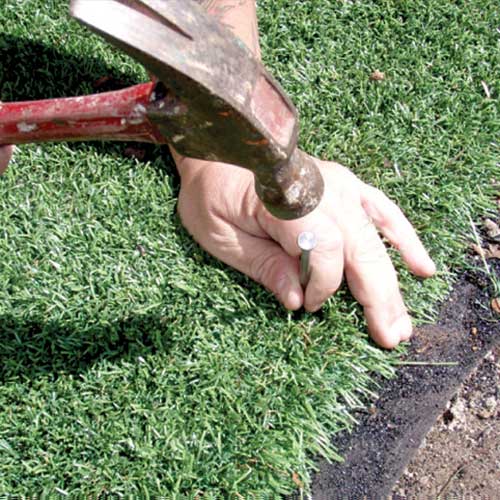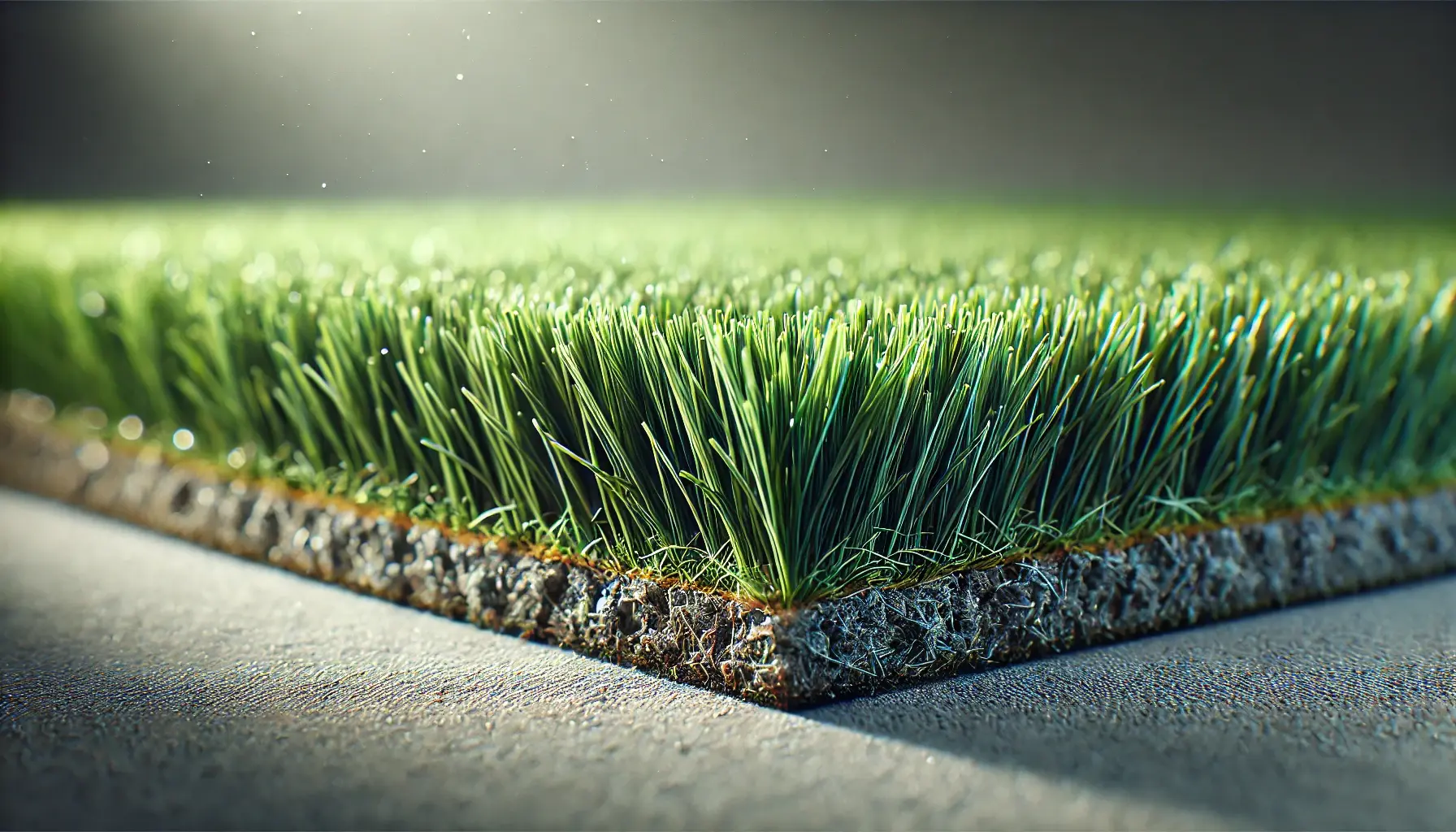Tailored Turf Installation Phoenix AZ for Homes, Companies, and Recreational Spaces
Tailored Turf Installation Phoenix AZ for Homes, Companies, and Recreational Spaces
Blog Article
Explore the Environmental Benefits of Opting for Synthetic Grass Solutions
The adoption of fabricated grass remedies provides a compelling possibility to deal with pushing ecological difficulties. By significantly minimizing water usage and minimizing the application of dangerous chemicals, these choices not only promote sustainable landscaping however also secure neighborhood ecological communities.
Water Conservation Perks
One of the most considerable benefits of fabricated grass is its capability to preserve water. In comparison, man-made grass does not need watering, substantially decreasing the total need for water sources.
By eliminating the need for routine watering, synthetic grass contributes to lasting landscape practices and aids alleviate the environmental impact of excessive water intake. The conservation of water prolongs to the decrease of drainage, which can lead to dirt erosion and river air pollution.
Additionally, the installment of synthetic grass enables districts and house owners to allot water resources more efficiently, focusing on vital uses such as drinking water and agriculture. The shift towards man-made turf not only promotes accountable water usage however likewise aligns with wider environmental goals aimed at preserving all-natural resources.
As neighborhoods significantly focus on sustainability, the water conservation benefits of synthetic lawn present an engaging instance for its fostering in household and industrial landscaping tasks.
Decreased Chemical Usage
The transition to artificial lawn considerably decreases the dependence on chemical therapies typically utilized in natural yard maintenance. Conventional turf management usually involves the application of pesticides, herbicides, and plant foods to advertise development and control bugs. These chemicals can position threats to human wellness, regional wildlife, and the setting, contributing to dirt and water contamination.
In comparison, fabricated turf gets rid of the need for these hazardous compounds. By decreasing the launch of synthetic compounds right into the ecological community, synthetic lawn advertises much healthier soil and water systems.
In addition, the lack of chemical drainage associated with man-made grass installments aids shield local rivers from contamination, sustaining water life and preserving biodiversity. Artificial turf companies phoenix. As neighborhoods progressively prioritize sustainable methods, selecting artificial lawn offers a feasible solution that lines up with ecological conservation goals. Via this change, building owners can take pleasure in rich green areas without endangering environmental health, leading the way for an extra sustainable future
Lower Carbon Impact

Additionally, the installation of synthetic lawn can result in considerable water preservation. All-natural lawns call for considerable amounts of water for watering, which not only includes in the carbon footprint related to water extraction and treatment yet additionally strains regional water sources. On the other hand, artificial turf needs marginal upkeep, calling for no watering, thus significantly decreasing water usage and its linked energy expenses.
Furthermore, the long life of synthetic grass contributes to its reduced carbon effect. With a life expectancy of up to 15 years or even more, the demand for constant substitutes is reduced, causing much less waste and reduced power consumption in manufacturing and disposing of traditional turf options. On the whole, synthetic grass offers a sustainable choice for ecologically mindful landscaping.
Habitat Conservation
Environment preservation is a vital consideration in the discussion over landscape design selections, especially when comparing synthetic grass to natural grass. All-natural grass lawns typically require comprehensive maintenance, including making use of herbicides, fertilizers, and chemicals, which can adversely impact neighborhood communities. These chemicals can seep right into the soil and rivers, harming native plants and fauna and disrupting regional environments.
Fabricated lawn removes the demand for harmful chemicals, thus securing nearby wild animals and keeping the honesty of surrounding ecosystems. The installation of artificial turf can lead to the conversion of previous yard locations right into even more biodiverse landscapes, such as pollinator gardens or visite site native plant areas, which can sustain neighborhood wild animals.
Ultimately, the change to artificial turf not just saves water and minimizes upkeep efforts but additionally promotes official website an extra harmonious relationship in between human tasks and the all-natural atmosphere, promoting habitat preservation in the procedure.
Long-Term Sustainability
Long-term sustainability is an important consider reviewing the advantages of synthetic grass over traditional lawn yards. Among the most considerable benefits of artificial turf is its toughness; it can last approximately 15-20 years with minimal upkeep, whereas natural lawn requires regular reseeding and substitute. This long life lowers the requirement for constant resources, such as water, plant foods, and chemicals, which are essential for keeping a healthy turf lawn.
Additionally, synthetic grass contributes to a decrease in carbon discharges related to yard treatment equipment. Traditional grass typically call for gas-powered mowers, leaners, and blowers, every one of which add to air pollution. Arizona turf. On the other hand, synthetic grass eliminates the need for such devices, promoting a cleaner setting
Furthermore, the production of fabricated turf increasingly uses recycled products, boosting its sustainability profile. As manufacturers embrace environmentally friendly methods, the ecological footprint of fabricated lawn proceeds to diminish.

Verdict
The fostering of synthetic grass remedies presents significant environmental advantages, consisting of considerable water conservation, minimized reliance on dangerous chemicals, and a lower carbon footprint. Additionally, synthetic grass aids in protecting all-natural habitats by reducing land disturbance and advertising long-lasting sustainability via making use of durable materials. Jointly, these variables underscore the potential of synthetic grass to add positively to ecological health and wellness and use a sensible option to conventional landscape design practices in an increasingly resource-conscious globe.
In contrast, synthetic turf does not require watering, substantially decreasing the general demand for water sources. By reducing the launch of synthetic compounds into the ecological community, man-made lawn promotes healthier dirt and water their website systems.
Additionally, the installment of man-made lawn can result in considerable water conservation. In comparison, artificial grass requires minimal maintenance, calling for no watering, thus considerably decreasing water use and its connected power prices.

Report this page